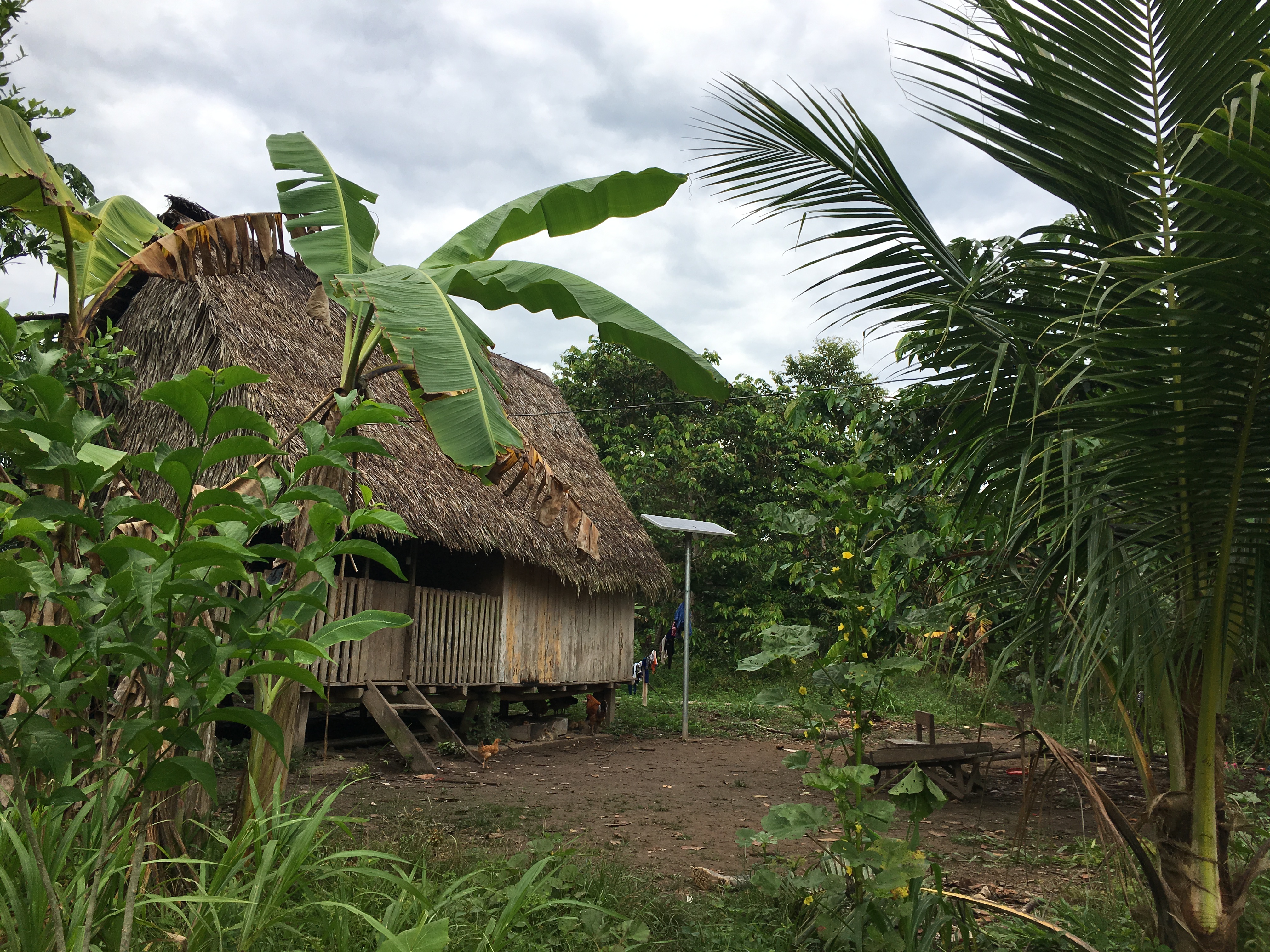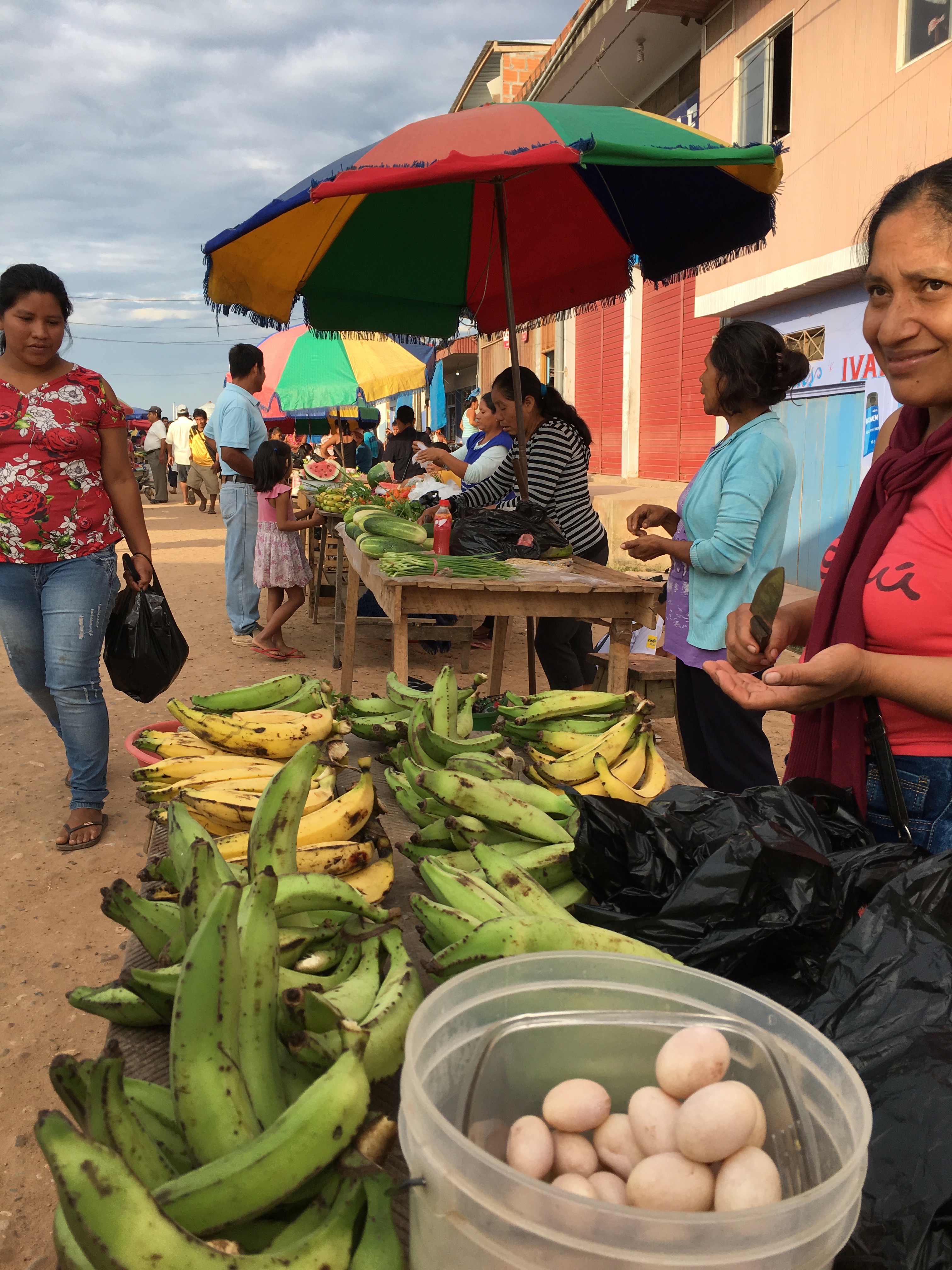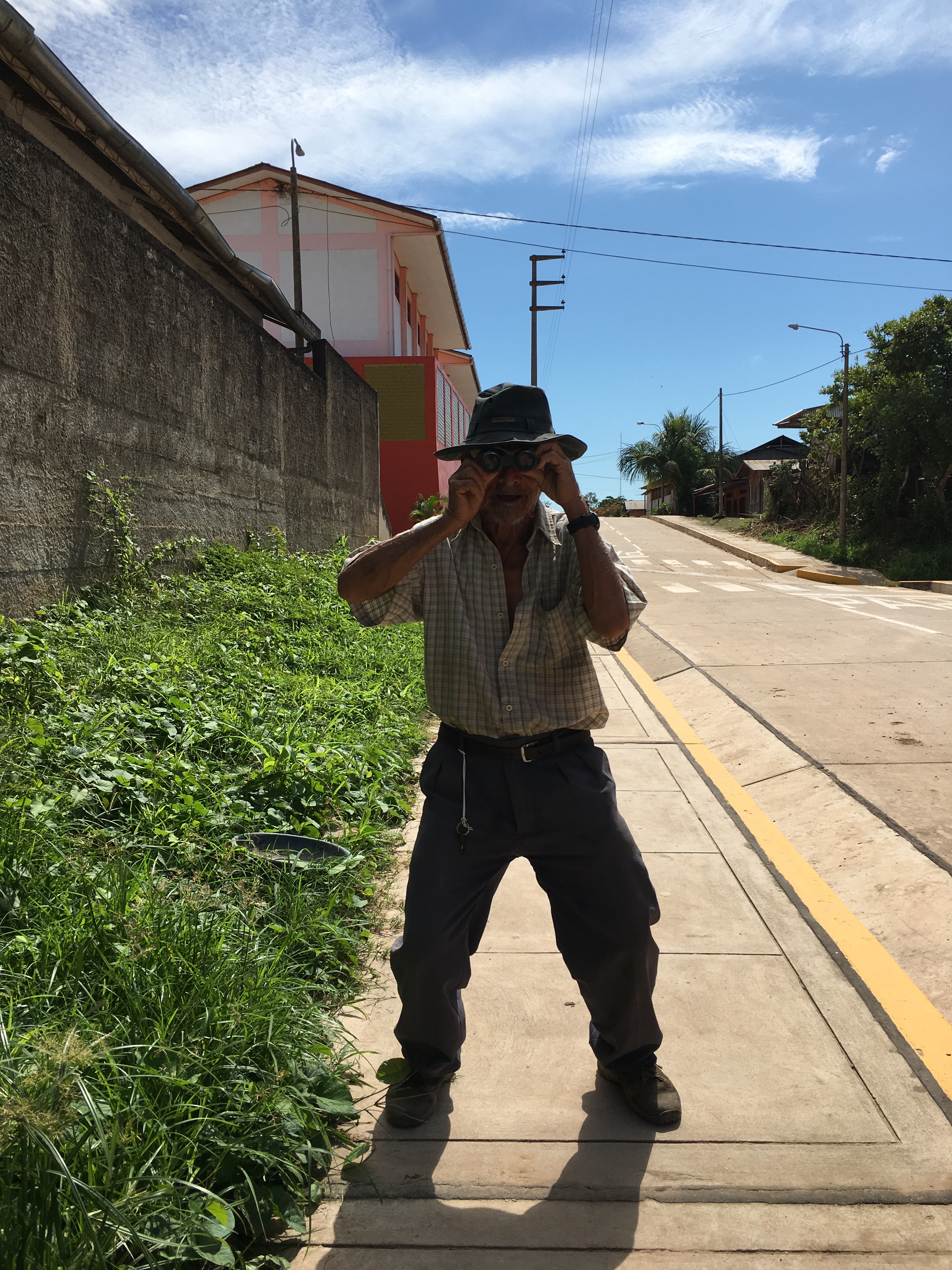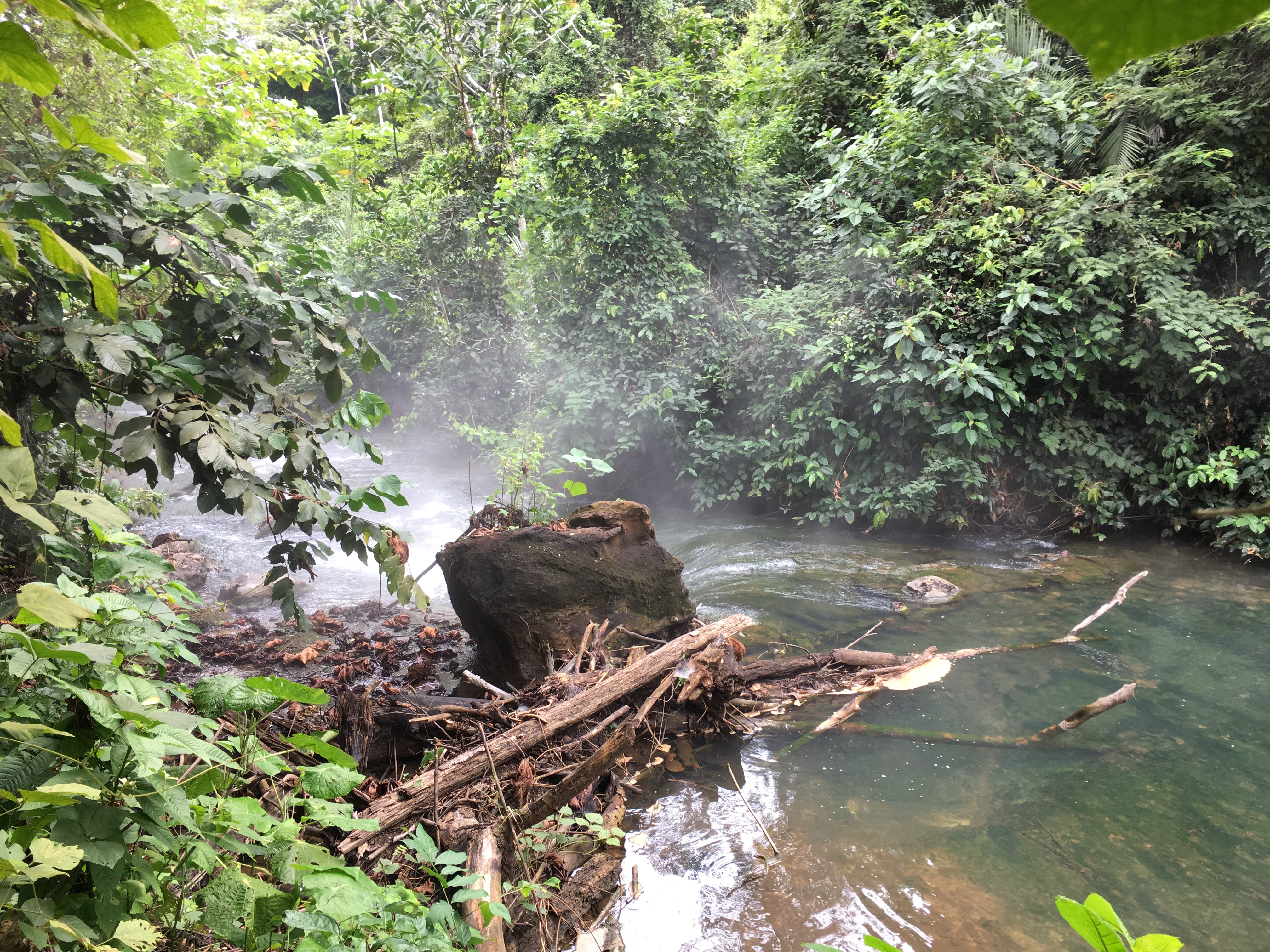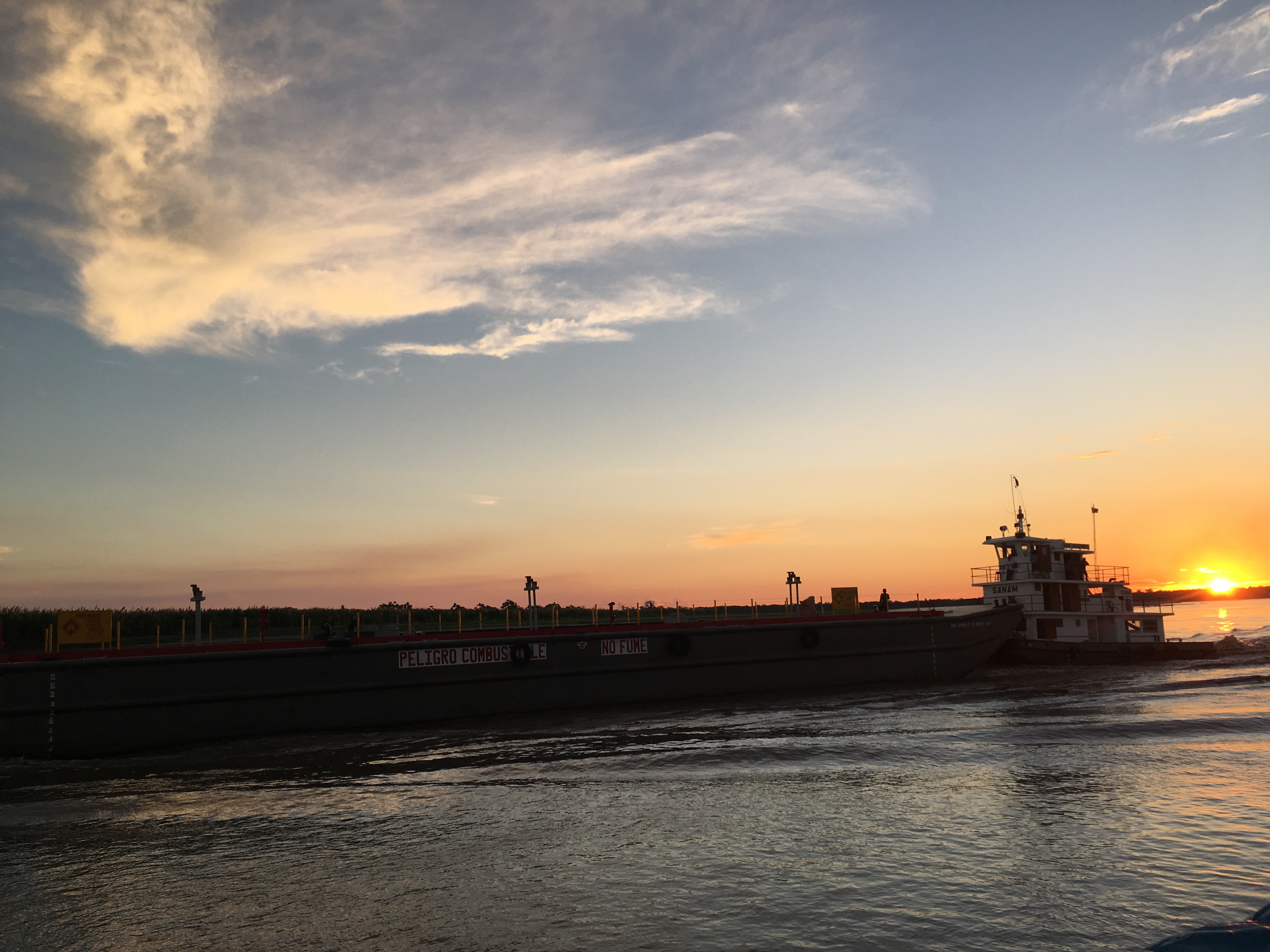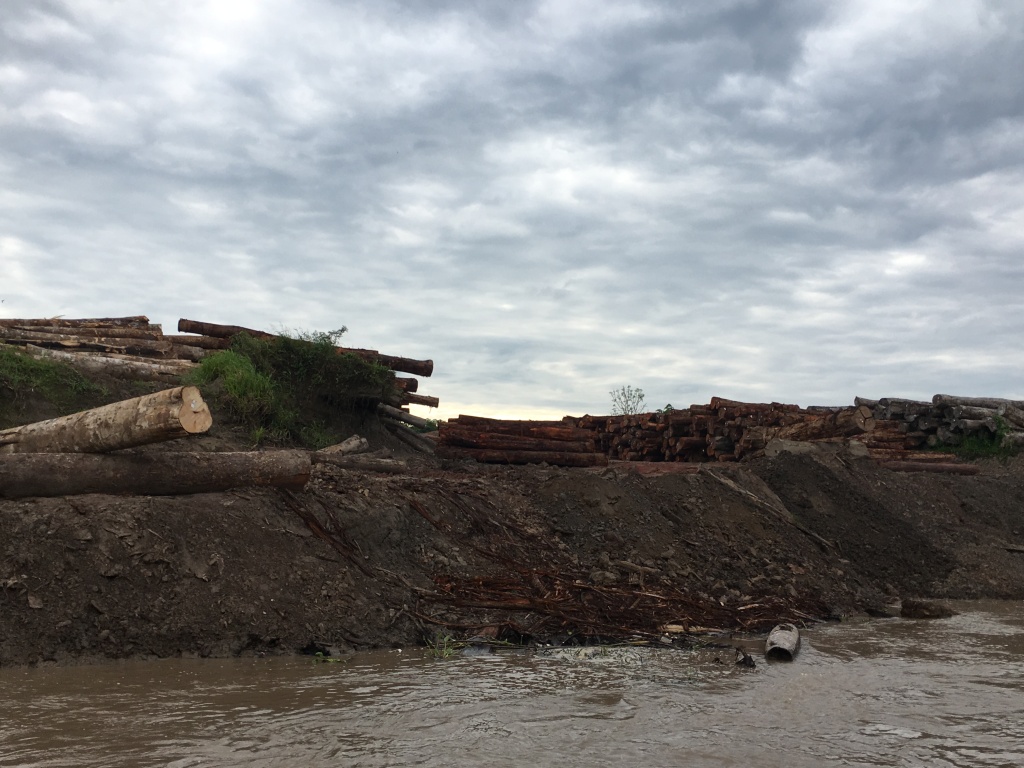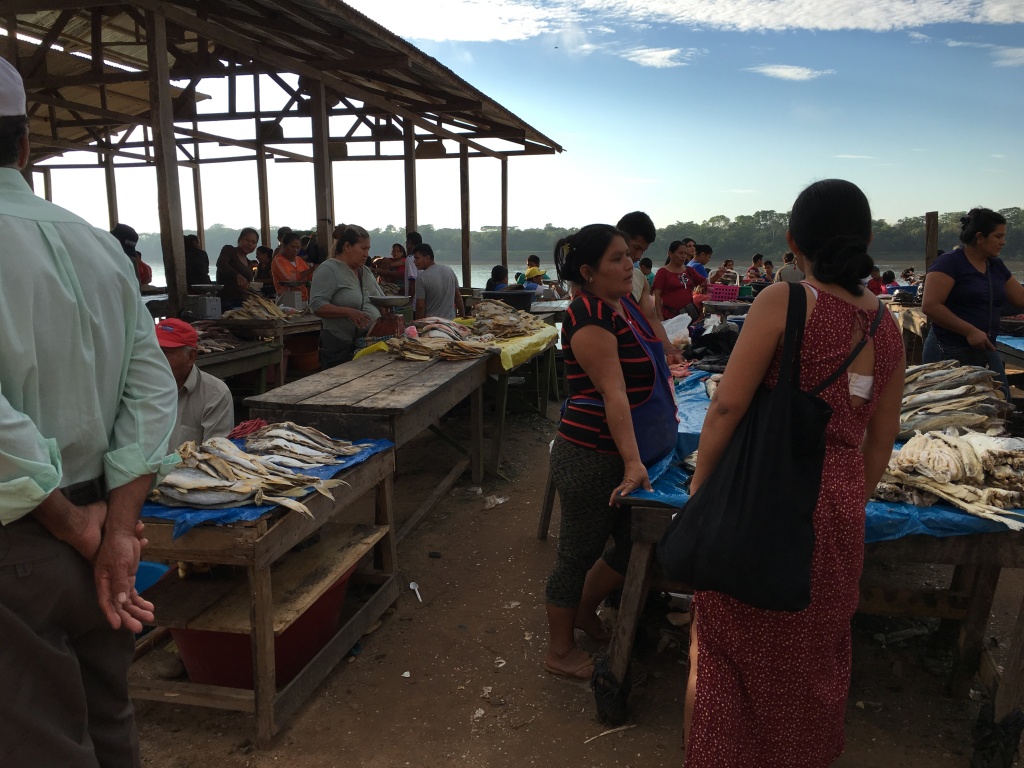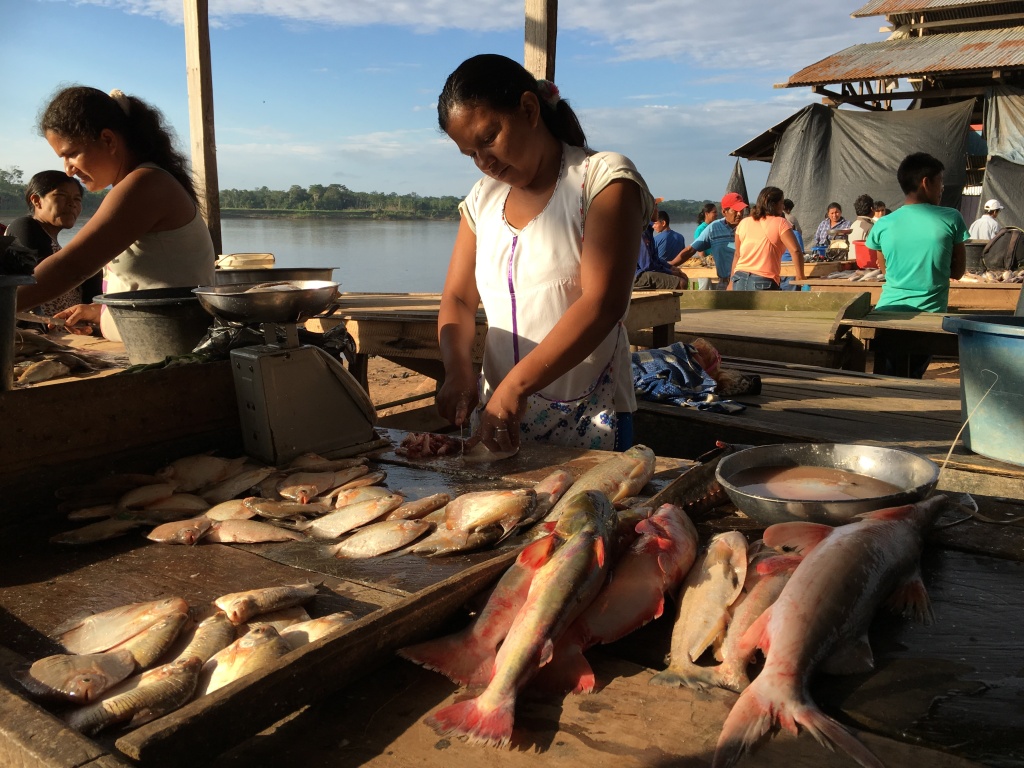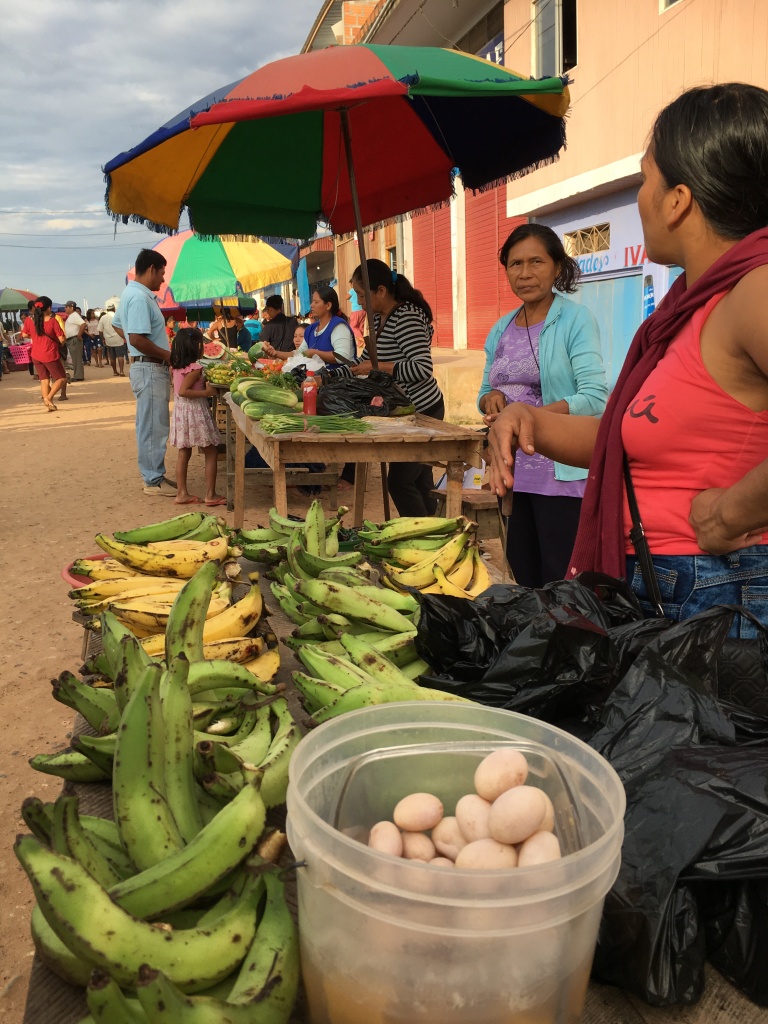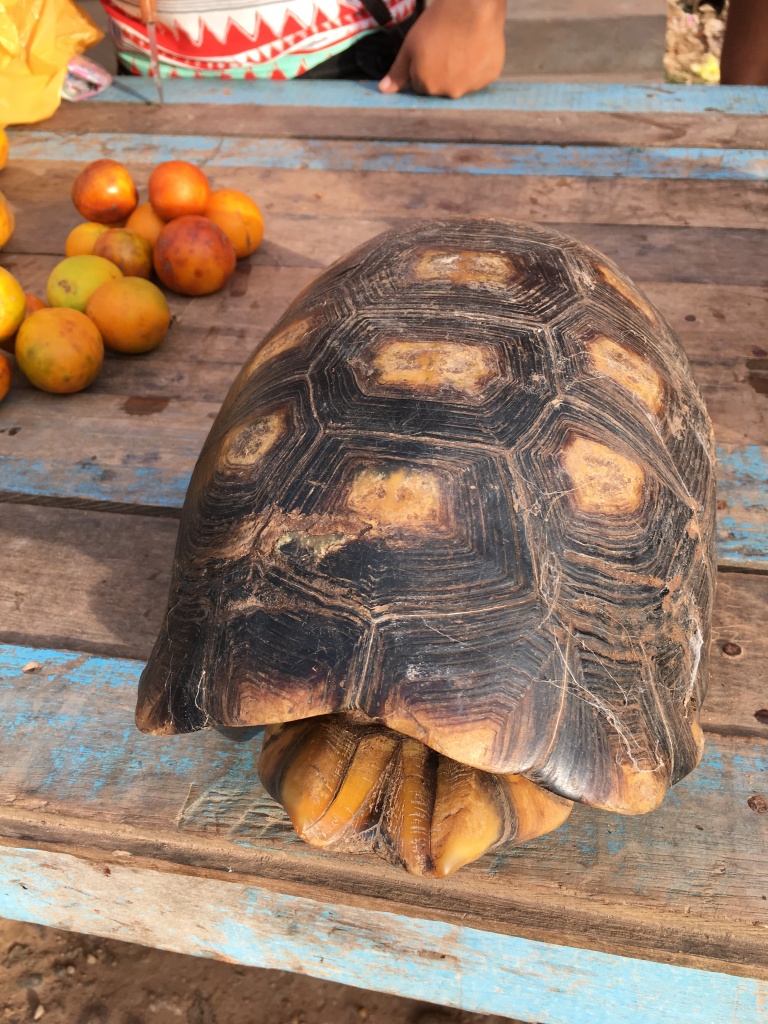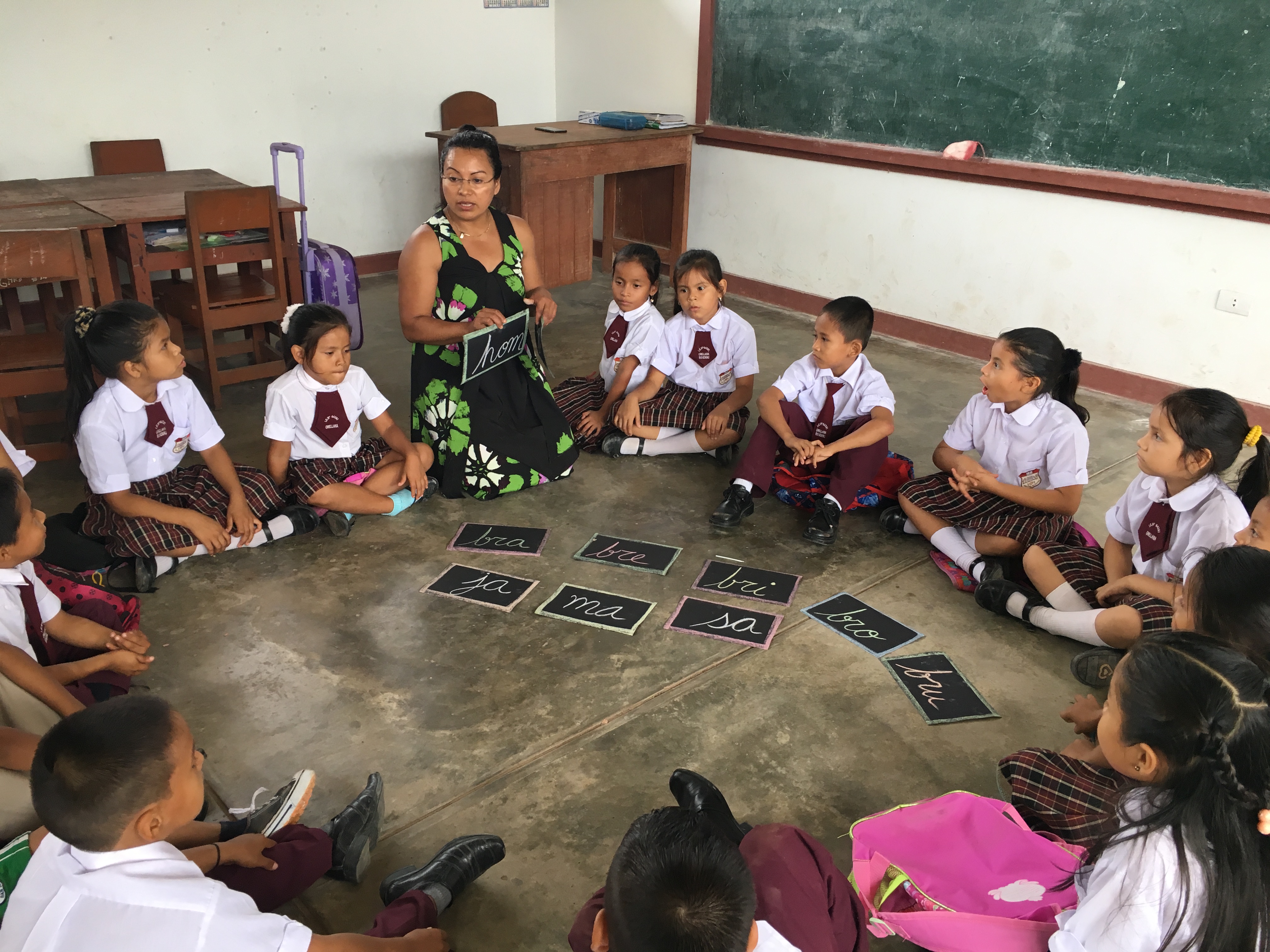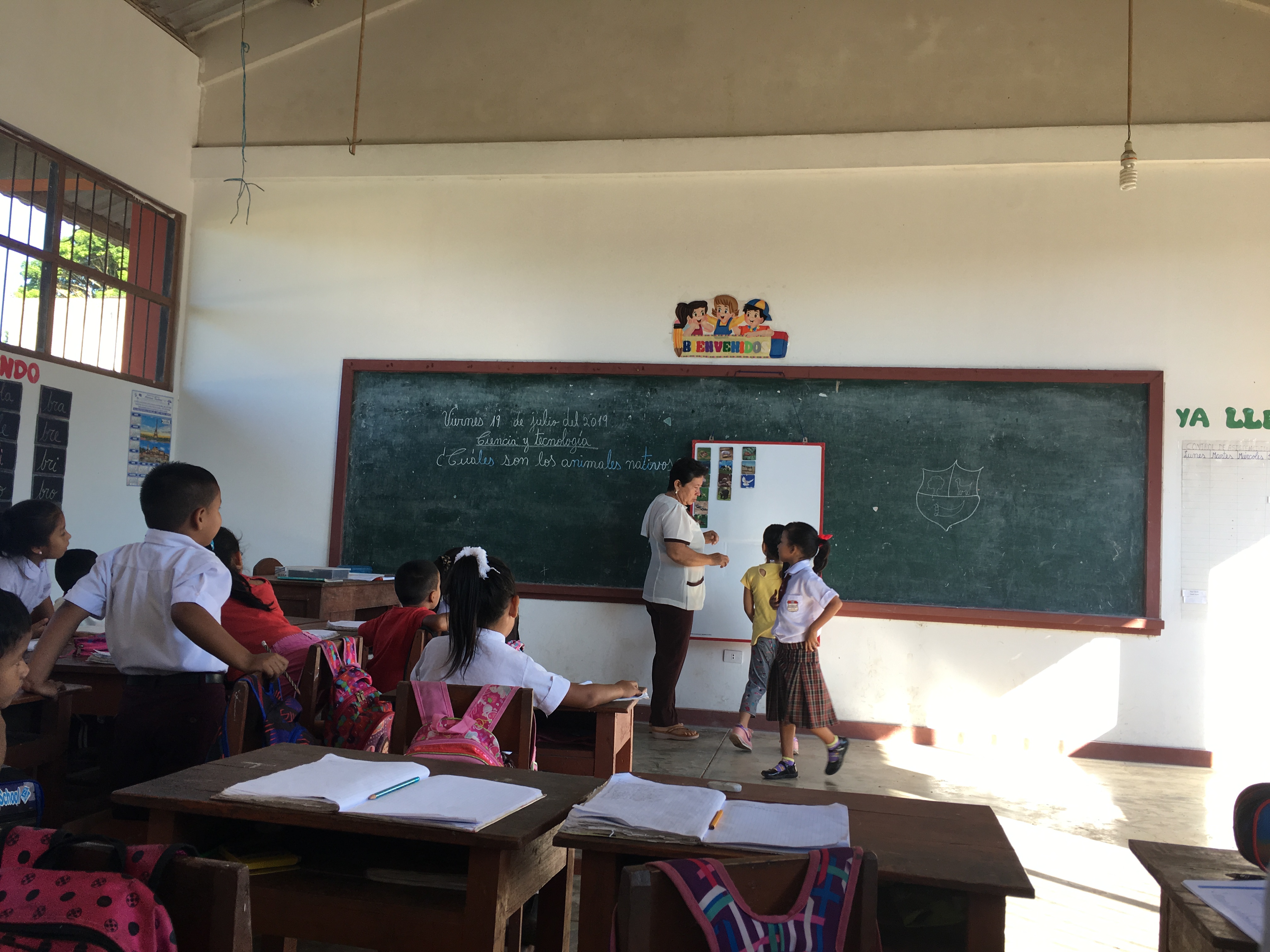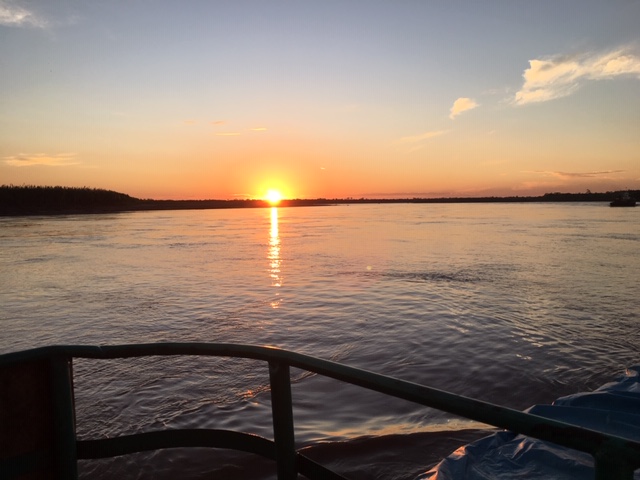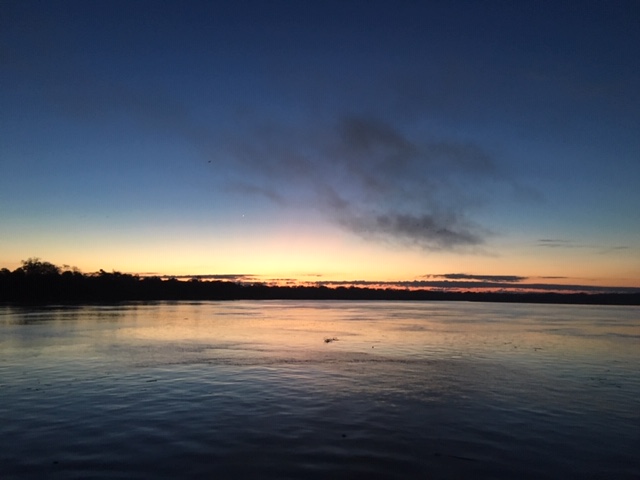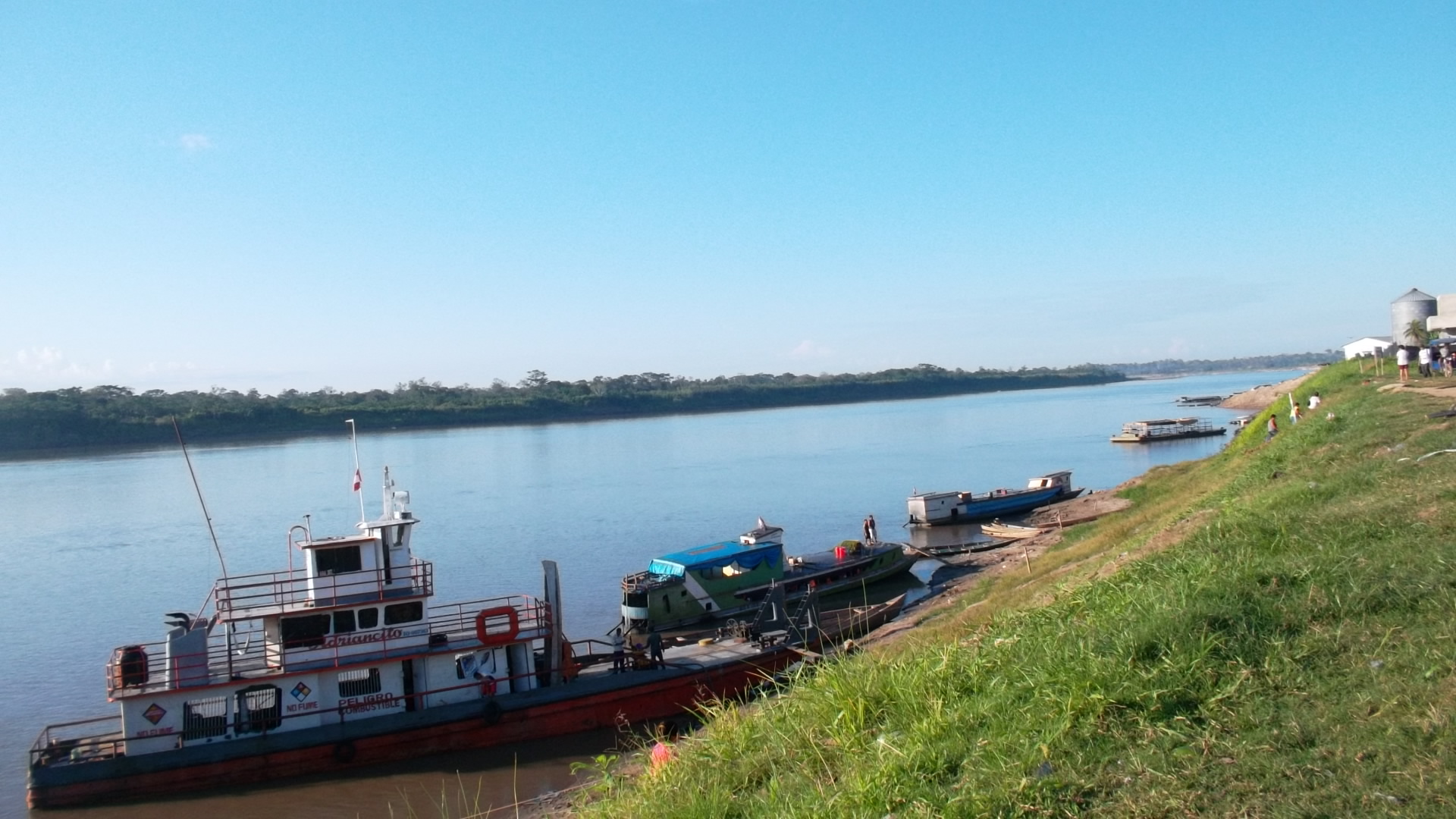Orellana is a little sleepy town and lays at the Ucayali River of the Region. One can get there by ship or Speedboat Bus. Ships take a bit more time to travel and the fee includes usually meals. The Journey was between Pucallpa and Orellana. Traveling with a ship it is much more relaxed! the travel gets longer, two days between Pucallpa and Orellana, but one can enjoy the day with people traveling, or maybe not. Usually in the afternoon at the dusk people get together to cheer up with a beer. Meanwhile nature just shows the twilight of the afternoon and whatever it moves, it is looking for shelter at this time of the day. With a little bit of luck, one can enjoy amazonian pink dolphins surfing with the waves that ships leaves behind. And one can get into an amazing experience! River-ways is the main and important navigation possibility, since there are not highways for transport in the region.
In between Pucallpa and Orellana, there is a small important river town Contamana. Traveling trough the Ucayali River from Contamana to Orellana, was an adventure as every time when I come to this place.
The journey took about from midnight to sunrise. A speedboat would take us within few hours to Orellana. This was a great opportunity to enjoy the evening and discover the sky at the south Hemisphere. The star of the night, of course the winter Star of the north hemisphere, Orion!, who is visiting the south for this season before going in winter to the north again.
Not to missed is the southern cross at sky in the evening, people working in navigation are usually the ones should know every star above, as their European ancestry did, I though. In this way, I was tempt to ask the ship captain, before looking like the most weird person in place, searching for stars at the sky. To my disappointment there was no reasonable answer to my questions. And I found out, they know very much about their navigation even at night, without any GPS track system, as many Brazilian boats have. Later on, despite of the weak moon night light to recognize someone, could the captain tell me just in detail what was going on at the ground of the water and how orientation though the shade of water drives navigation. I found it amazing this kind of navigation in a not one hundert percent safe place. Just to think that was my routine the last 15 Years traveling from a place to other without wondering about safety conditions. it scared me a bit! but the captain knew what he was doing, which again was giving the feel of being safe.
Orellana it´s just a small town with around 2 000 houses. Most houses are build with material out of the region which give them a typical amazonian landscape in between trees.
The place is in a constantly changing period of time. Since in early years it was the center of extraction of coca leaves and shelter of many drug bosses. The presence of military brought security to the town and it became to be one of the bases for tropical wood extraction. Both activities carries its legal and illegal parts. The extraction of coca leaves is legal only if farmers are subscribed in an association who controls the trade and farmers must sell the production to this association in return, the cooperative sets the prices, which are much lower than the illegal market. Farmers are limited to a certain amount of harvest area. In Peru one can find products of coca leaves such as flour for cereal meals, ice cream, sweet candies, mate or tee and other derivates of the product. It belongs to the tradition specially in the Andean regions due to the Incas heritages to bless with coca leaves for the beginn or end of any event. USAID programs in cooperation with the German government tempt to promote licit crops as alternative to coca leave production. This nevertheless takes time and efforts for an establishment and the low prices of licit products at the local markt demotivates farmers. But on the other hand high fines for illegal processing or selling makes farmers to step back in this enterprise.
The transport security is selected. Usually one can travel without thinking that any thing can happen. But in some cases transport at the Ucayali River needs a certain security due to pirates in the region. Police is only provide at the bigger cities such as Iquitos and Pucallpa. Most certainly are harmlos against passengers and they steal usually the gathered income of the transport. In the last years pirates are not being seen in the region. Nevertheless many private transport have a personal security on board.
The town, at the shore of the Ucayali River, goes along the river from north to south. In the way when the sun rises, illuminates the town along the shore and by the dusk brings the shadow of the houses at the promenade making it at the afternoon much more lively. The river becomes an important element of life and landscape of the people living there.
In the very early morning the market is open until around 9:00 o’clock. This is done in a informal way. Mostly are extracted products out the river or the Jungle. The lively of fruits and vegetables self made food are on the table to sell. Amazonian animals are rarely seen, nevertheless not completed banned. Even though people have understanding for shifting of consume behavior, there is still some preference to consume amazonian meat.
The economy driving force of the town is fishery from natural ponds, wood extraction, small entrepreneurship, service is a growing activity.
Usually people after work would hang around at the „plaza de armas“ a square to sit down and chill out for youngster and older people. This also is the opportunity for small seller, who sells home made food and amazonian fruits. Probably the heart of the afternoon is at the place where people join for volleyball. This is, besides Football, one the game people play passionately in this town.




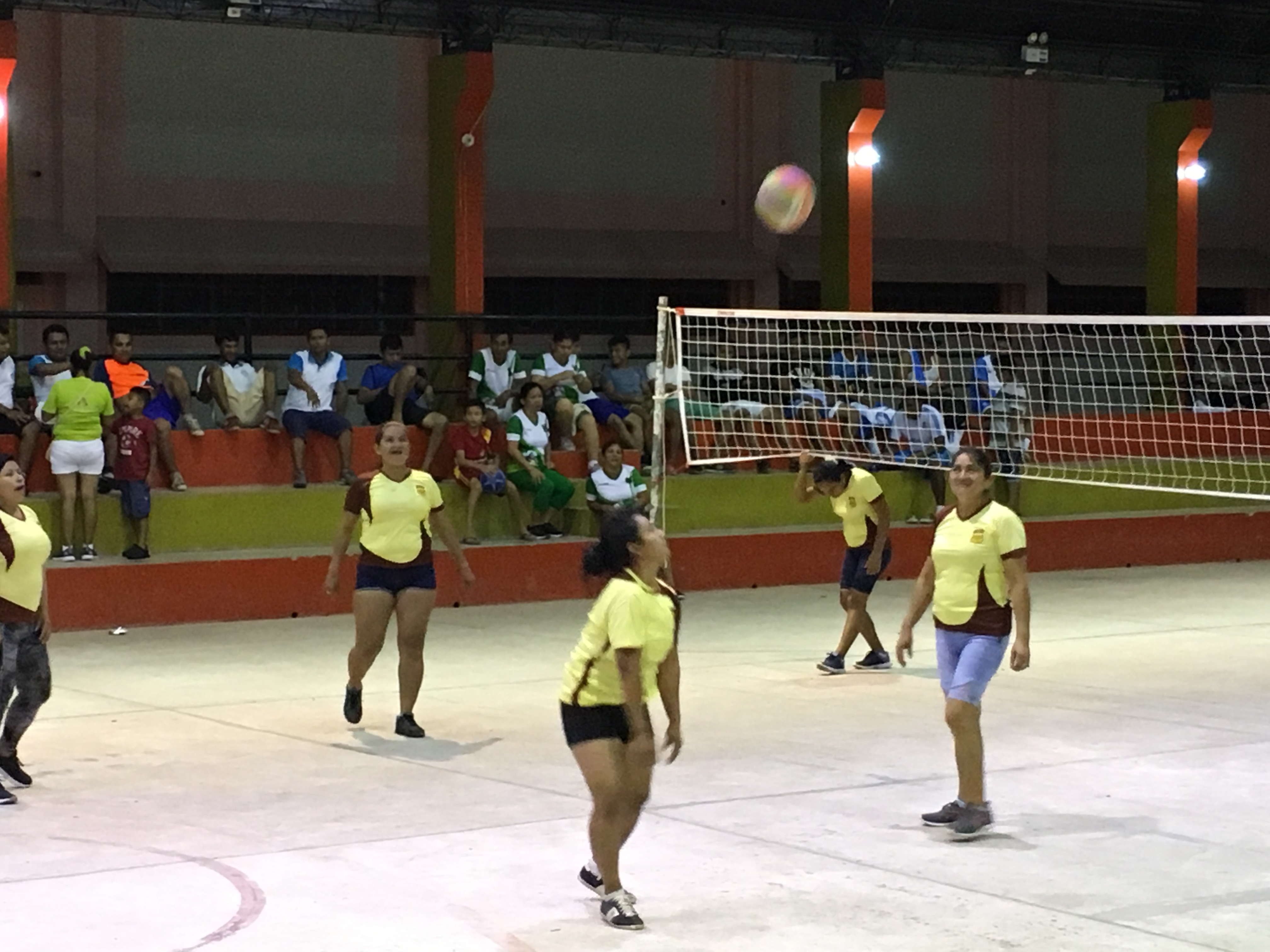
In many cases and no matter how the ground looks like, people just close the streets and make a break when a motorcycle pass by. When playing at the promenade it might happen that the ball is hit with high power and ended up in the river. As the river flow is high the ball is collected after few kilometers of the town. And requires the ability of people to paddle and swim. A game with nature after all.


